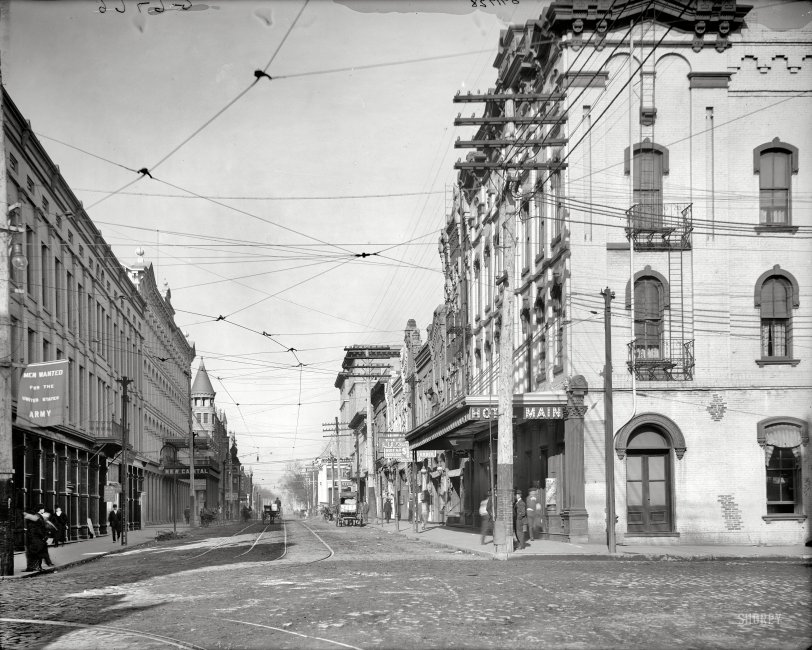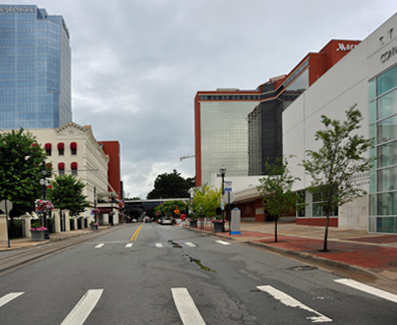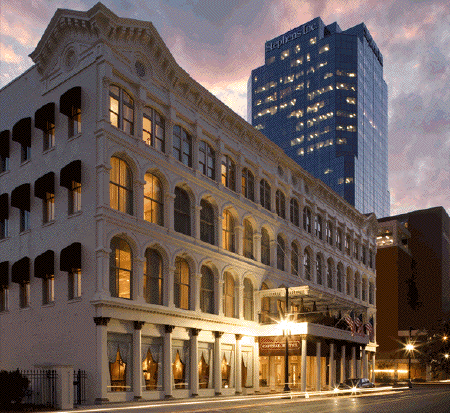


Framed or unframed, desk size to sofa size, printed by us in Arizona and Alabama since 2007. Explore now.
Shorpy is funded by you. Patreon contributors get an ad-free experience.
Learn more.

- Freeze Frame
- Texas Flyer wanted
- Just a Year Too Soon
- WWII -- Replacing men with women at the railroad crossing.
- Yes, Icing
- You kids drive me nuts!
- NOT An Easy Job
- I wonder
- Just add window boxes
- Icing Platform?
- Indiana Harbor Belt abides
- Freezing haze
- Corrections (for those who care)
- C&NW at Nelson
- Fallen Flags
- A dangerous job made worse
- Water Stop
- Passenger trains have right of way over freights?
- Coal
- Never ceases to amaze me.
- Still chuggin' (in model form)
- Great shot
- Westerly Breeze
- For the men, a trapeze
- Tickled
- Sense of loneliness ...
- 2 cents
- Charm City
- What an Outrage
- Brighton Park
Print Emporium
Markham From Main: 1910

Wrapping up our tour of Little Rock, Arkansas, circa 1910. "Markham Street west from Main." Detroit Publishing Company glass negative. View full size.
+105
Below is the same view from July of 2015.

Nor Iron Bars
The iron bar with turnbuckle is a reinforcement for a pole that's under a great deal of stress. There are many wires going off to the right, very few to the left, and that would tend to make the pole bend. When the turnbuckle is tightened, the two "saddles" near top and bottom force the pole to straighten out. The arrangement is still used once in a while; most cities don't need it any more because the utilities are underground, and in the country there's usually plenty of space for a normal guy wire.
Tightly wrapping the part of the post under the most stress with iron wire helps prevent splinters from popping out, which would be the first sign of incipient failure, and keeps passing carriages from nicking it, which might cause a weak spot that could propagate into failure. The sheet-metal guard serves much the same purpose.
Unintended comic consequences
And now we see why "Spider-Man" was not set in Arkansas. Just think of the merchandising that Little Rock missed out on.
The Sweeper
No one has commented on the man atop the hotel's marquee sweeping it off. I hope he had the courtesy to warn the folks below when he was about to sweep a load off the edge.
Incidentally, the heavy iron bar on the left of the pole has a turnbuckle in it about half way down. It does not connect to the overhead wires, although it looks like it does.
As for a ground wires, they usually just go straight down the pole and into the ground. They never would get wrapped around the pole so many times.
What a Change
All these middle American cities like Little Rock -- with their miles of sturdy houses on tree-lined streets, brick and stone business districts, schools, colleges, urban transit, rail connections, and electric power and telephone systems - were raw prairie barely ninety years before. When you think about the literal building of 19th-century America, what was accomplished is astounding.
Wires
I'll bet the wires are to keep people from putting up leaflets.
[They're an electrical ground for the pole. See the cable running down the side. - Dave]
Can anyone explain
the wires around the bottom of the telephone poles? Perhaps to keep horses from chewing them.
[They seem to be ground wires. - Dave]
The New Capital
on the left is still there as the elegant Capital Hotel. Its surroundings aren't as cluttered looking now, and the hotel is looking much better about 100 years later and after a $24M renovation.

Hotel Marion on the right
This was a hangout for the legislators -- crony business no doubt. The hotel used to have a bar when I was in college called the Gar Hole. Another place for deals to be struck. Long gone now. Union Station is seen in the distance down Markham.
How Odd
Simply look at the hi-def version of the photo and scroll from the near corner to the left, which looks like a scene out of England to me, to the near right corner, which is more fitting to this photograph. It just looks like two different photographs of two different places. So odd!
























On Shorpy:
Today’s Top 5